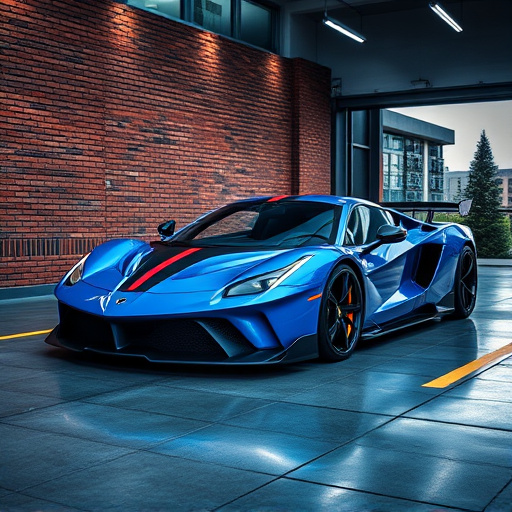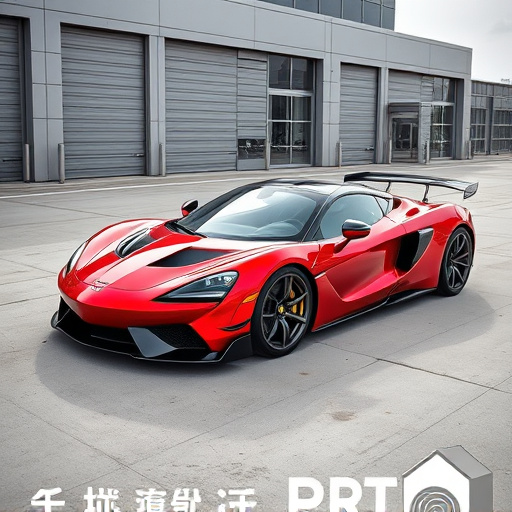High-flow air intake filters in racing enhance engine power through increased airflow but require strategic integration and maintenance to prevent wear and ensure long-term reliability. Advanced filtration media, cooling systems, and optimized fuel injection are key best practices for sustained high performance without compromising engine durability. Regular filter cleaning and replacement are crucial for optimal vehicle health and longevity in competitive racing conditions.
In the competitive world of racing, achieving a balance between performance and longevity is an enduring challenge. This article explores the intricate relationship between high-flow air intake filters and their impact on both speed and durability in racing cars. We’ll delve into the mechanics behind these components, examining factors that influence their trade-off. Through case studies and best practices, we uncover strategies to optimize both performance and longevity, offering insights for racers seeking a competitive edge.
- Understanding the Performance-Longevity Trade-Off in Racing: High-Flow Air Intake Filters
- Factors Influencing the Balance: A Deep Dive into Racing Mechanics and Filter Technology
- Strategies for Optimizing Both Performance and Longevity: Case Studies and Best Practices
Understanding the Performance-Longevity Trade-Off in Racing: High-Flow Air Intake Filters

In the realm of racing, the quest for optimal performance often drives engineers and enthusiasts to explore various upgrades. One such component that has garnered significant attention is the high-flow air intake filter. These filters promise an intriguing balance between enhancing engine performance and ensuring the vehicle’s longevity. The trade-off lies in their design: while they aim to deliver more airflow, potentially boosting horsepower and acceleration, this increased flow can also place additional strain on the engine and other components over time.
High-flow air intake filters work by optimizing the airflow into the engine, allowing for more efficient combustion. However, this heightened performance comes with a consideration. Over time, the constant high-flow rate can lead to increased wear and tear on the filter itself and other related parts, such as sensors and fuel systems. Balancing immediate performance gains against long-term reliability is a delicate act, one that requires careful tuning and regular maintenance to ensure these filters serve their purpose without compromising the vehicle’s overall health and longevity in competitive racing conditions.
Factors Influencing the Balance: A Deep Dive into Racing Mechanics and Filter Technology

In the realm of racing, the delicate balance between performance and longevity is a constant puzzle that engineers and enthusiasts strive to solve. A key factor in this equilibrium lies in the mechanics of high-flow air intake filters designed for racing purposes. These filters play a pivotal role in enhancing engine performance while ensuring the system’s longevity. The advanced technology behind them allows for increased airflow, providing the engine with a richer mixture of air and fuel, thereby boosting power output.
However, this pursuit of peak performance also demands careful consideration to prevent premature wear and tear. High-flow air intake filters, despite their benefits, are subject to intense conditions, including high temperatures and varying air pressure. Racing environments often expose these filters to harsh elements, which can lead to clogging or degradation over time. Therefore, the choice of materials, filter media, and design becomes crucial in achieving the perfect balance. Incorporating advanced filtration media that offers superior dust and debris capture without restricting airflow is essential. This deep dive into racing mechanics ensures that vehicles not only excel on the track but also maintain their performance and durability for an extended period.
Strategies for Optimizing Both Performance and Longevity: Case Studies and Best Practices

Optimizing both performance and longevity in a vehicle, especially for racing purposes, involves a delicate balance. High-flow air intake filters, a popular modification among racers, can significantly enhance engine performance by increasing airflow. However, this modification must be carefully considered alongside other factors to ensure long-term durability.
Case studies of high-performance racing cars reveal that a strategic approach is key. Regular maintenance and the use of high-quality components are best practices for maintaining longevity. For instance, some teams employ advanced cooling systems and optimized fuel injection to not only boost performance but also prevent premature wear and tear on engine parts. Additionally, regular cleaning and replacement of air filters, including high-flow variants, ensure optimal airflow without compromising engine health over time.
In the quest for optimal performance in racing, managing the balance between power outputs and engine longevity is a delicate art. High-flow air intake filters play a pivotal role in this equation, offering both significant performance gains and potential durability challenges. By exploring the intricate factors that influence this trade-off, from mechanical nuances to filter technology advancements, we’ve uncovered valuable strategies for racing teams. Implementing these best practices allows for maximizing engine performance while ensuring competitive longevity, ultimately positioning high-flow air intake filters as indispensable components in the pursuit of victory on the racetrack.














